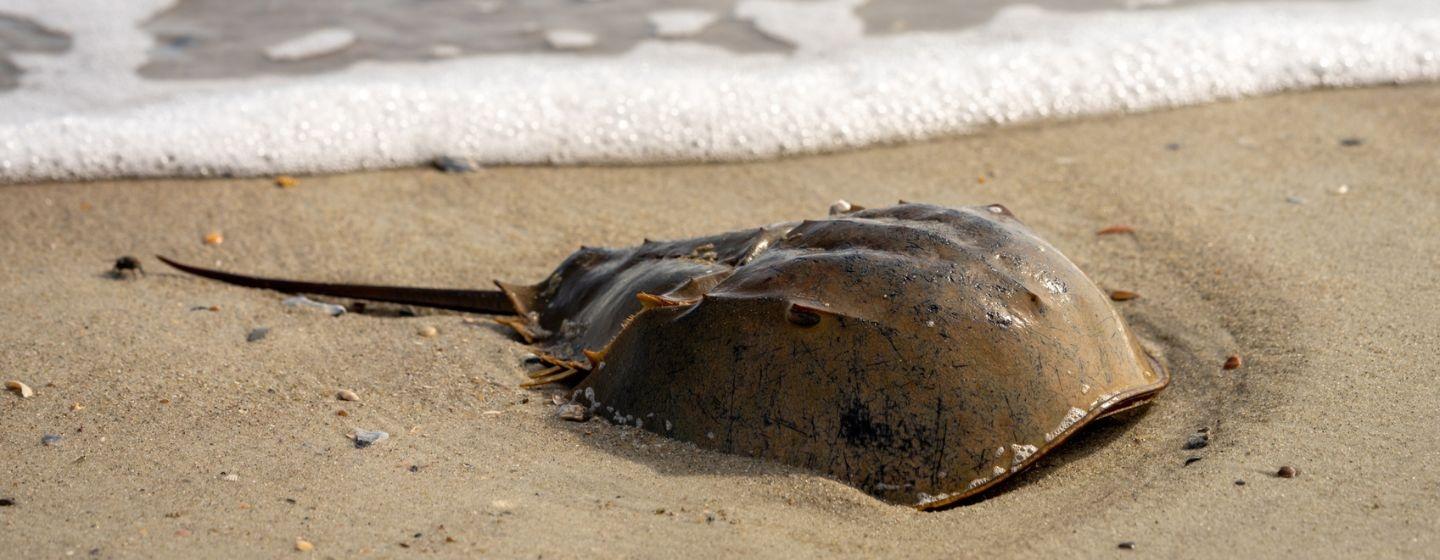Groups Seek Federal Protection for Horseshoe Crabs


If you happen to come across a horseshoe crab shell while walking along the beach, you might think you’ve just discovered a creature related to the dinosaurs. You would be close, sort of.
Scientists have discovered fossils of early horseshoe crabs that lived 445 million years ago. Dinosaurs first appeared roughly 200 million years later. Bottom line, you could call a horseshoe crab a living fossil.
Four species of horseshoe crab are found today: one is found in Atlantic coastal waters and the Gulf of Mexico, and the other three are found along Asia’s coastal waters.
But while horseshoe crabs may have survived the extinction event that wiped out the dinosaurs, they’re not doing as well surviving humans.
That’s because horseshoe crab blood contains a unique enzyme called limulus amebocyte lysate, or LAL. This substance causes the blood to coagulate when exposed to toxins. Biomedical companies use LAL to test medicines, vaccines, implants and more for toxins. That’s also how they ensure medical equipment is safe for people.
Nearly one million horseshoe crabs were harvested for their blood in 2022, according to the Center for Biological Diversity. Unfortunately, many horseshoe crabs die in the process of blood harvesting.
“We’re wiping out one of the world’s oldest and toughest creatures,” said Will Harlan, a senior scientist at the center, in a release. “These living fossils urgently need Endangered Species Act protection. Horseshoe crabs have saved countless lives, and now we should return the favor.”
The center is joined by 22 other organizations in petitioning the National Oceanic and Atmospheric Administration (NOAA) to list American horseshoe crabs under the Endangered Species Act as an endangered or threatened species.
“The continued reliance on horseshoe crab blood by pharmaceutical manufacturers has led to a rapid decrease in the population of this important species,” said Kathleen Conlee, vice president for animal research issues with the Humane Society of the United States. “Fortunately, there are non-animal alternatives that can replace the use of horseshoe crab blood and help protect these amazing animals from further overharvest.”
The groups maintain synthetic alternatives are being used in Europe.
Watch this Sci NC story about how a North Carolina company is working to create an alternative to horseshoe crab blood for medical research:
Every time you get a flu shot, you should thank a horseshoe crab.
In addition to medical research, horseshoe crabs are also harvested for bait by several commercial fisheries.
But it’s not just harvesting that threatens the brown, body-armored animals. Horseshoe crabs have also lost spawning grounds all along the Atlantic and Gulf coasts where they lay their eggs. The petition cites coastal development, shoreline hardening (the building of walls and other engineered structures along the coast to prevent erosion) and sea-level rise. In fact, the largest populations, which are found in Delaware Bay, have declined by two-thirds in the last 30 years.
Groups also say the decline in horseshoe crabs threatens other species. One horseshoe crab can lay about 4,000 eggs. And shorebirds rely on those eggs and newly hatched crabs for food.
“Horseshoe crab eggs are incredibly nutrient dense, sustaining [birds like] the federally threatened red knot on their long migration journey,” said Steve Holmer, vice president of policy at American Bird Conservancy. “Greater protection of the horseshoe crab is needed to fully recover the red knot, as well as conserve other shorebird species.”
While populations of horseshoe crabs in North America are in decline, a sister species, the tri-spine horseshoe crab in Asia, faces similar threats and is nearly extinct.
“It is clear from the available science that current fisheries management practices are failing to protect and sustain these ancient mariners,” said Tim Dillingham, executive director of the American Littoral Society. “We must do more to keep them and the red knots and other life that depend on horseshoe crabs from disappearing from this Earth.”